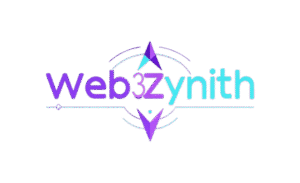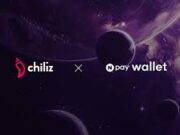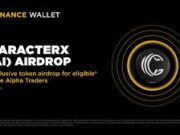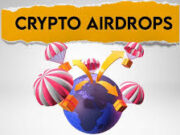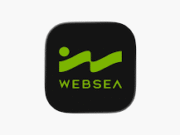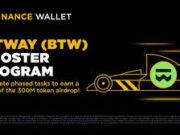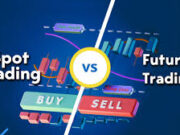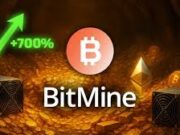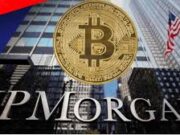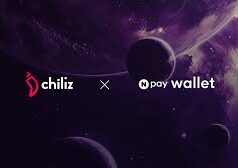On July 1, 2025, Stable, a new Layer 1 blockchain backed by crypto exchange Bitfinex and utilizing Tether’s USDT as its native gas token, unveiled the first phase of its ambitious development roadmap. Emerging from stealth mode in June 2025, Stable aims to redefine stablecoin infrastructure by integrating USDT directly into its base layer, offering fast, low-cost, and gas-free peer-to-peer transactions. Branded as a “stablechain,” the project is designed to cater to institutional and enterprise needs while fostering global financial inclusion. This announcement, reported by The Block, marks a significant milestone in Stable’s mission to streamline digital dollar transactions and enhance blockchain interoperability. Here’s a closer look at the Phase 1 roadmap, its key features, and its potential to reshape the stablecoin landscape.
What is Stable?
Stable is a purpose-built Layer 1 blockchain that leverages Tether’s USDT, the world’s largest stablecoin by market capitalization ($157.7 billion as of July 2025), as its native gas token. Unlike traditional blockchains that rely on volatile native tokens for transaction fees, Stable eliminates this complexity by using USDT for all transaction and settlement fees, ensuring price stability and predictability. Supported by Bitfinex and USDT0—a Tether-affiliated token designed for zero-gas transfers across blockchains—Stable is engineered for high throughput, sub-second block finality, and full Ethereum Virtual Machine (EVM) compatibility. The project also introduces USDT0, a LayerZero-powered token that enables seamless, gas-free stablecoin transfers across multiple blockchain networks.Stable’s vision is to create a robust infrastructure for stablecoin-based finance, addressing the fragmentation, high costs, and volatility of existing blockchain ecosystems. With USDT settling over $100 billion daily, Stable positions itself as a specialized platform for institutions, fintechs, and businesses seeking reliable, dollar-denominated transactions. Key features include:
- Gas-Free USDT0 Transfers: Peer-to-peer USDT transfers are free, reducing cost barriers for users.
- Institutional Features: Guaranteed blockspace allocation, batch transaction processing, and confidential transfer options balance privacy and compliance.
- User-Friendly Design: The native Stable Wallet offers social login, debit/credit card integration, and human-readable wallet aliases for seamless onboarding.
- EVM Compatibility: Developers can build decentralized applications (dApps) using familiar Ethereum tools, broadening the platform’s appeal.
Phase 1 Roadmap: Laying the Foundation
The Phase 1 roadmap, detailed in Stable’s documentation and shared via posts on X, focuses on establishing the core infrastructure for the stablechain. Key components include:
- Mainnet Launch with PlasmaBFT and EVM Compatibility
Stable’s mainnet will run on PlasmaBFT, a consensus mechanism designed for high throughput and sub-second block finality, ensuring near-instant transaction confirmations. Full EVM compatibility allows developers to deploy smart contracts using Ethereum-based tools, making Stable accessible to a wide range of builders. This phase prioritizes a stable, scalable foundation for institutional and retail users alike. - USDT as Native Gas Token
By integrating USDT as the gas token, Stable eliminates the need for volatile native tokens, simplifying transactions for users and institutions. This feature is particularly appealing for businesses seeking predictable costs in a digital dollar environment. Smart contracts will also be dollar-denominated, enhancing stability for enterprise use cases. - Gasless Wallet and Fiat Onboarding
Stable introduces a gasless wallet design, allowing users to interact with the blockchain without worrying about transaction fees for peer-to-peer transfers. The Stable Wallet supports fiat onboarding via debit/credit card integration, making it easier for users in emerging markets to adopt on-chain financial tools. This focus on accessibility aligns with Stable’s goal of driving global financial inclusion. - Enterprise Lanes for Institutional Users
Stable’s “enterprise lanes” offer dedicated transaction channels optimized for low-latency, high-throughput execution, catering to financial institutions and fintech platforms. These lanes ensure reliable, cost-effective processing for large-scale transactions, positioning Stable as a go-to network for institutional finance. - Internal Testnet and Early Builder Onboarding
Stable has launched an internal testnet to refine its infrastructure and is actively onboarding early developers to build applications tailored for stablecoin use cases. Specialized software development kits (SDKs) will support third-party teams in creating dApps for payments, remittances, and trading
Why Stable’s Roadmap Matters
Stable’s Phase 1 roadmap is a game-changer for the blockchain and stablecoin ecosystems, offering several key benefits:
- Streamlined Stablecoin Infrastructure: By making USDT the native gas token, Stable eliminates the volatility and complexity of traditional blockchain fee structures. This is a significant departure from general-purpose chains like Ethereum, where gas fees in ETH can fluctuate unpredictably. Stable’s approach ensures cost predictability, appealing to businesses and institutions.
- Institutional Appeal: Features like enterprise lanes, batch processing, and confidential transfers address the specific needs of financial institutions, which often require high-speed, compliant, and scalable solutions. With USDT’s dominance in global transaction volume (70% of the stablecoin market), Stable is well-positioned to capture institutional interest.
- Enhanced Interoperability: The integration of USDT0, powered by LayerZero’s Omnichain Fungible Token (OFT) standard, enables seamless cross-chain transfers without relying on fragmented liquidity pools or risky bridges. This “lock-and-mint” mechanism ensures that Stable is interoperable with other blockchains, enhancing its utility in the broader ecosystem.
- Financial Inclusion: By offering gas-free peer-to-peer transfers and fiat onboarding, Stable lowers barriers to entry, particularly in underbanked regions. This aligns with Tether CEO Paolo Ardoino’s view that stablecoins have significant potential for payments and remittances in emerging markets.
- Regulatory Compliance: Stable’s confidential transfer features balance transaction privacy with compliance, addressing concerns raised by regulators about stablecoin usage in illicit activities, as noted in a 2024 U.S. Treasury Department report. This could help Stable navigate26⁊
Future Phases and Long-Term Vision
While Phase 1 focuses on launching the mainnet and core features, Stable’s roadmap outlines future phases to enhance its capabilities:
- Phase 2: Introduces a bridge with Bitcoin and optimistic parallel execution to boost transaction throughput, further optimizing performance for enterprise use cases.
- Phase 3: Transitions to a Directed Acyclic Graph (DAG)-based consensus system for improved speed, resilience, and resource efficiency, alongside advanced stablecoin features like zero-fee transfers and enhanced privacy.
- Phase 4: Focuses on developer infrastructure, including SDKs, APIs, and tools to support a robust dApp ecosystem, fostering rapid innovation.
These phases aim to position Stable as a leading infrastructure layer for global commerce, with a focus on seamless, low-cost digital dollar transactions. Challenges and Considerations
Despite its promise, Stable faces challenges. The development team remains undisclosed, raising questions about transparency, though Tether CEO Paolo Ardoino’s endorsement and Bitfinex’s backing lend credibility. Tether’s history of regulatory scrutiny, including a 2021 CFTC fine for misleading claims about USDT reserves, may also cast a shadow, though Stable’s compliance-focused features aim to address such concerns. Additionally, the project’s success hinges on adoption by institutions and developers, which will require delivering on its promises of scalability and low costs
Market Sentiment and Impact
The announcement has generated buzz in the crypto community, with X posts reflecting excitement about Stable’s potential. Users like
@CryptosR_Us called it a “game-changer for digital dollars,” while
@AlvaApp highlighted its appeal to institutions seeking predictable, low-friction finance. The involvement of Bitfinex and Tether, alongside backing from figures like Peter Thiel, adds weight to Stable’s ambitions. However, as with any new blockchain, execution will be critical, and market volatility could impact USDT’s dominance if competing stablecoins gain traction.
What’s Next?
Stable’s mainnet launch timeline remains undisclosed, but the internal testnet is active, and early builder onboarding is underway. The project’s focus on institutional and emerging market use cases, combined with USDT’s massive transaction volume, positions Stable as a potential leader in stablecoin infrastructure. As the SEC continues to approve crypto-related products, like Grayscale’s recent Digital Large Cap Fund ETF, increased liquidity for USDT could further fuel Stable’s growth. Investors and developers should monitor Stable’s progress, particularly as it competes with other stablecoin-focused projects like Plasma, which Bitfinex also backed with a $3.5 million investment in 2024
Conclusion
Stable’s Phase 1 roadmap unveiling marks a bold step toward a stablecoin-first blockchain ecosystem, leveraging USDT’s dominance to deliver fast, low-cost, and institution-friendly transactions. With EVM compatibility, gas-free USDT0 transfers, and enterprise-grade features, Stable has the potential to redefine digital finance, particularly for institutions and underbanked regions. While challenges like transparency and regulatory scrutiny remain, the backing of Bitfinex and Tether, combined with a clear roadmap, positions Stable as a project to watch. As it progresses through its testnet and future phases, Stable could become a cornerstone of global, dollar-denominated blockchain commerce.For more details, visit The Block or follow Stable’s updates on
